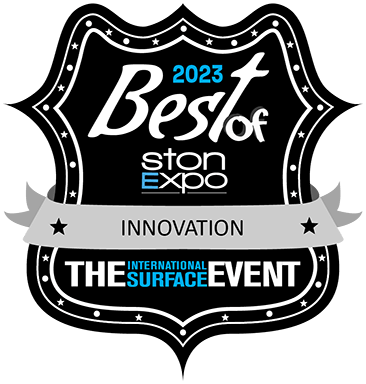GuidesHow To's
Machines and Equipment for Stone Restoration Contractors (Part 2)

The machinery choice depends upon factors like the company size, type of work the company does, and financial status.
For Beginners
The beginners may start with a mono-rotary floor device that is engineered to perform stonework. It could be a good quality 110V 17-18 inch machine. However, you may prefer a more powerful motor. Such a fundamental piece of equipment will never become obsolete and can become your pervasive everyday work-horse irrespective of your company's size and growth.
Is Planetary Accessory worth it?
Some specific machines also provide the possibility of attaching a planetary accessory. You may connect that accessory to your device without using any tools, like a brush or a pad holder. But beware, it can draw many of your amps and potentially damage the motor in the long run. It can activate electrical breaks with an increasing frequency rendering it practically unusable. Hence most of the 1.5 HP equipment may not handle such accessories.
However, some of those 1.5 HP machines in the USA can take the attachment pretty well without any issues. But you got to ensure that the speed multiplication ratio (RPM of 3 planetary heads) should not be more than 1:4. For example, Klindex offers a removable all-tempered steel accessory with 19 inches working path. Besides, one 110V mono-rotary 17-inch floor machine is also available, sporting a 2.5 HP motor consuming only 14 amps.
220 V Machines with 3-4 HP
Going further, you may look for a 220 V mono-phase mono-rotary floor machine with a 3-4 HP motor. These kinds of equipment will provide greater cutting power and can also smoothly move planetary accessories having a working path of 17-21 inches.
Electrical Outlet issues in 220V
But using 220V machines lead to the problem of finding a suitable electrical outlet. Most operators use their generators. Some of them resort to pig-tailing by carrying a dedicated extension cord. The cord has a socket that connects to the machine with no plug at the other end. It enables them to join the extension cord to a 220V circuit in the circuit breaker box or two independent electric circuits of 110V. It meant that they would open the box cover, loosen the screws of positive and negative hot wires and connect the pigtail to those screws. Then they would tighten the screws and finally join the earthing wire to the ground rod.
Convenient Devices for 220V outlet issues
Fortunately, there is a solution to this inconvenience. A convenient device can solve the issue by combining two 110V outlets into an electrical box. The other end of the box has a 220V outlet which they can use for plugging the machine. Ultimately the operator can insert two 110V plugs into two separate outlets. It prevents the tampering of illegal, laborious, and mostly unwelcome activity. Such devices are available out there in the market.
Full-Fledged Planetary Machine
Your next logical step could be to go for a full-fledged planetary machine having a working path of a minimum of 24 inches. As mentioned above, if you have convenient voltage mergers available, you should prefer 220V appliances. Such machines provide extra powerful motor which is a more significant advantage in a planetary setting.
Floating Vs. Rigid
The most crucial factor while choosing a full-fledged planetary machine is ensuring that the machine heads are not floating. Alternatively, they must have a provision for locking-in. Further, you have to ensure that there is no rubber padding around the diamond pads. When the machine grinds the floor, it will hold the diamond pads in place, and rubber padding might interfere with stability.
But, in a 2-step restoration procedure of honing and polishing, rubber pads may be acceptable. But if your primary motive to buy a full-fledged planetary machine is performing severe grinding, you should go in for totally rigid elements. Only rigid ones can deliver final results similar to conventional Italian grinding machines, the industry standard.
Planetary machines: the equipment of choice
Planetary machines are available in a broad range and are typically extra aggressive. They are the equipment of choice for any medium-to-large projects involving honing and polishing terrazzo, granite, and marble floors.
What about terrazzo and concrete floors?
You have to keep your mono-rotary floor machine handy because you will use it for the project's final polishing phase. However, concrete and terrazzo works are an exception where you will generally use resin-bond synthetic diamond pads for polishing.
Here, we need to mention terrazzo and concrete floors specifically. You have to differently approach their grinding, honing, and polishing for getting the best results because manufacturers produce both of them differently.
Terrazzo Floor
Terrazzo floors are generally cast-in followed by grinding, honing, and optional polishing. Manufacturers use completely rigid machines for their production. Therefore, ideally, completely frozen planetary machines can tackle future restoration interventions of terrazzo floor surfaces.
Concrete Floor
There is no floor grinding involved here as the concrete floor is poured and leveled differently. Suppose you want to polish a concrete floor with planetary machines in future interventions. In that case, you will find a surface that was not generated by grinding devices and has a different design. It will have a typical short-wave characteristic which you will never encounter on a terrazzo floor. Hence, the diamond pads of your planetary machine will skip the depressions in those short waves. You will not treat them with the same intensity as higher parts of transient waves in many instances. You will end up with an uneven polish.
How to overcome Short wave issues on a concrete floor?
The best solution here is to use spring-loaded diamond pads (honing elements). The machine's weight will keep the springs flat on the higher ground. In contrast, the springs will automatically push the honing elements inside the short wave depressions and follow the curves effectively. It will lead to most uniform honing and polishing of the entire floor.
Edging machines
Edging machines work on the floor's edges, as is evident from their name. If there is a small project, a handheld variable speed right-angled polished or grinder will serve the purpose. For larger projects, edging machines let you work efficiently while standing up. Although edging machines are available in numerous designs, only a select few are worth considering. So, you got to be selective. E.g., The Klindex edging machine with a well-designed 2 HP, two counter-rotating heads.
Please ensure that your edging machine
- has two counter-rotating heads for maintaining balance
- can keep it flat on the floor (else it will severely gauge the stone floor)
- can reach the wall ideally
- allows you to see your work
- and works faster
Machines and Equipment for Other Installations
Handheld machines
Handheld right-angled polishing and grinding machines are a must-have for every stone restoration professional. They can use such devices to grind, hone, and polish the walls, staircase steps, countertops, shower enclosures and spot restoration of floors, etc. Look for variable speed between 600-3000 RPM that can cover any scenario.
Grinding: You can use vacuum-brazed or electroplated low-grit metal-bond synthetic diamond pads on 4-5 inch for grinding. Sintered 4-5 inch cup wheels will be better.
Honing: You may use 4 to 5-inch resin-bond synthetic diamond pads in different grits. However, seven-inch versions are gaining popularity.
Polishing: You may use white or tan nylon pads stuck to a 4, 5, or mostly 7-inch pad holder.
Popular Brands: Black & Decker, DeWalt, Flex, Makita, Metabo, Milwaukee.
Is Water-feed Feature worth it?
Some machines come with a water-feed feature. In most stone restoration projects, it is hardly of any use. We will not recommend it for obvious safety issues. It may be safer with an air-powered tool, but they are neither proper nor practical for stone restoration projects.
Rotary Power Tool
It is another crucial little device in a professional stone refinisher's tool-box. It can repair cracks or refill holes by applying a thin vacuum-brazed diamond blade on limestone, marble, travertine, etc. Craftsman (Sears brand), Dremmel, and Ryobi are some popular brands of rotary power tools.
Conclusions
The choice of machine is paramount for stone restoration contractor activities. If you use unsuitable devices to only start and get a feel, it might lead to wrong judgment of reality. By any standards, refinishing stone floors is not an easy activity, even for skilled professionals with the best equipment. Here are some of the conclusions before digging deeper.
- If someone is looking for a feel of the trade before a buying decision, it seems to be a case of low self-esteem. In other words, It is bound to fail.
- If you try to give it a shot with inadequate equipment, you will waste both time and money you may utilize in abrasive means and polishing powders.
- It is better to save up and then consider getting involved in stone restoration if you can't afford appropriate equipment sometime soon.
- You may also explore buying used equipment initially, but you should ensure that such machines can handle stonework.
- Ensure to get the proper type of training from recognized professional training institutions. The International Training Centers for the Stone Industry (ITCS), the National Training Center for the Stone and Masonry Trade (NTC) are worth mentioning.
- Classes conducted by distributors or other manufacturers are mostly not worth your money and time.
- Get training from proven teachers and not from salespeople.


